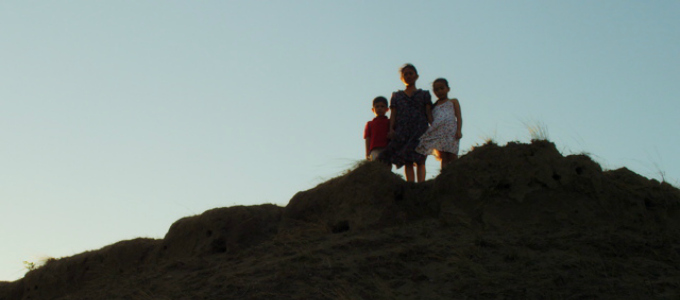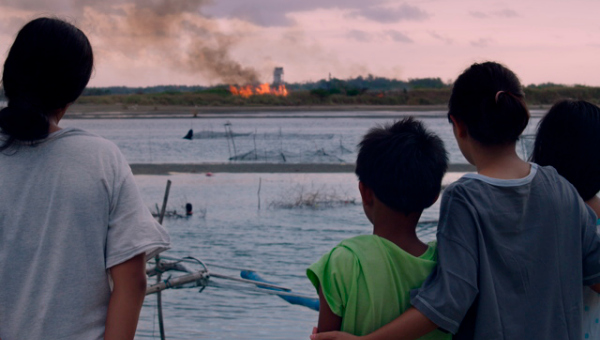 It’s hard to talk about NORTE: THE END OF HISTORY without dealing with its 250 minute running time. Filipino director Lav Diaz is well known for expecting a considerable time commitment from his audiences: his films can be eight and nine hours long . NORTE’s four hour span is actually one of his more succinct efforts! Nevertheless, this quiet melodrama holds our attention with ease, gently pulling us into its world. We don’t notice the four hours go by.
It’s hard to talk about NORTE: THE END OF HISTORY without dealing with its 250 minute running time. Filipino director Lav Diaz is well known for expecting a considerable time commitment from his audiences: his films can be eight and nine hours long . NORTE’s four hour span is actually one of his more succinct efforts! Nevertheless, this quiet melodrama holds our attention with ease, gently pulling us into its world. We don’t notice the four hours go by.
The opening shot is typical of the dominant style of the film: a fixed camera observes a long, unbroken scene from some distance. Three characters are engaged in a political and philosophical discussion about declining morality, revolution, and anarchy. One in particular, the student Fabian, is particularly animated – pumped up with youthful certainties, comfortably expounding on radical theoretical ideas. The ideological arrogance and lack of humanity in Fabian’s arguments is underlined by the camera’s insistence on maintaining its distance, of refraining from any active participation in ideas which will subsequently lead to tragedy. Fabian is, of course, the Raskalnikov equivalent in this retelling of Dostoyevsky’s Crime and Punishment.
Diav’s expansive treatment of the literary classic retains many of the story’s dramatic moments, but portrays them with chilling restraint. Often, the full horror of what is taking place is wholly or partially hidden offscreen, so that the action is left to the lurid conjectures of the imagination. However, Diav’s principal interest seems focused on the effects of events rather than the events themselves. The real action in the film takes place in the long spaces between the dramatic set-pieces, when the characters are faced with the terrible consequences of what has taken place. The dominance of detached, often long shots throughout would superficially suggest that this is an exercise in voyeurism – but there is a strong sense of empathetic concern with these people’s lives, and perhaps even despair at the social and political structures which they must face.
… the carefully crafted sound design works as well as any musical score …
This is partly revealed in the subtle use of the camera: how it begins to move in a slow pan, as if no longer simply observing, but seeking to participate in the scene; or how the close-ups, so powerful because of their relative rarity, are there to both witness and understand characters at moments of particular emotional importance. Also, the carefully crafted sound design works as well as any musical score in shaping and contextualising the emotional journeys taking place. But the heart of the film is most forcefully revealed in the character of Joaquin, the man arrested for Fabian’ s crime. His refusal to succumb to bitterness or hatred in the face of terrible injustices is a humanistic leitmotif that runs through the film. His is an almost saintly disposition, but is portrayed so naturally that it is completely convincing, even when the laws of physics are casually suspended in one magical brief scene. The patient observation of the key female characters is also revealing. They often have much less to say than the men (whose talk is frequently framed in terms of arrogance or ineffectiveness), but they are the ones who are given many of the close-up shots, the camera bearing witness to their mute sorrow.
NORTE: THE END OF HISTORY is, like the best of ‘slow cinema’, as much about the experience of the film’s emotional story as its dramatic structure. If you stick with it, you will be rewarded by a rich cinematic experience, and one certainly worth the investment of 250 minutes of your time.
httpvh://youtu.be/nzpfJrlL4SE


Well, Mike, I recall what you said about The Taste of Money, one of my favourites last year at the film festival !
I don’t think, although it clearly starts there, that this does have anything meaningful to say to Raskolinkov and Crime and Punishment – as I have said in my review, such acts of restitution as Fabian eventually makes are out of guilt, and cost him nothing.
The most convincing part is the philosophizing, which is not easily done.